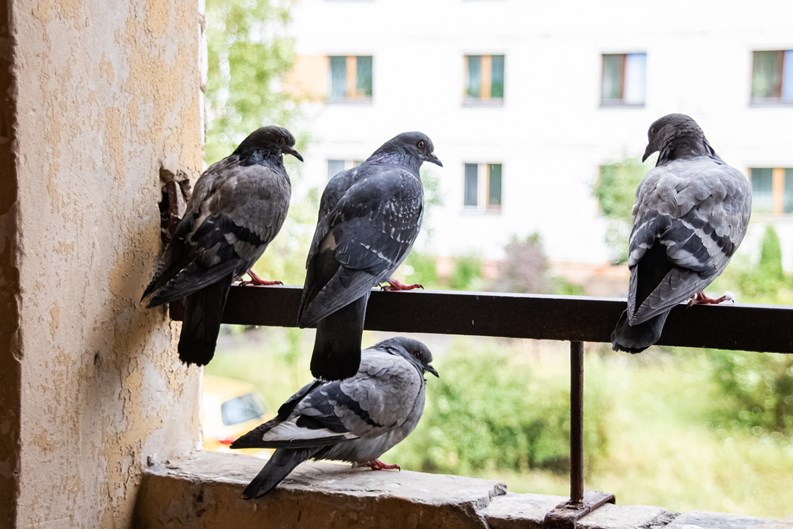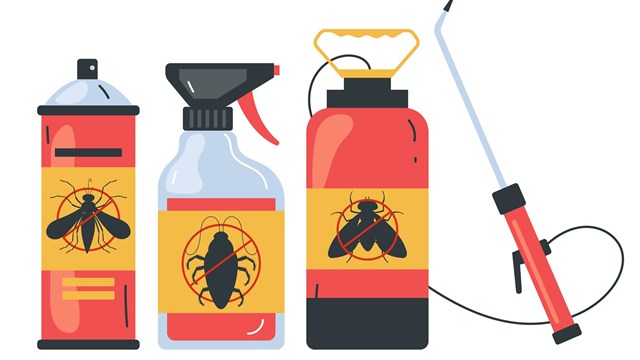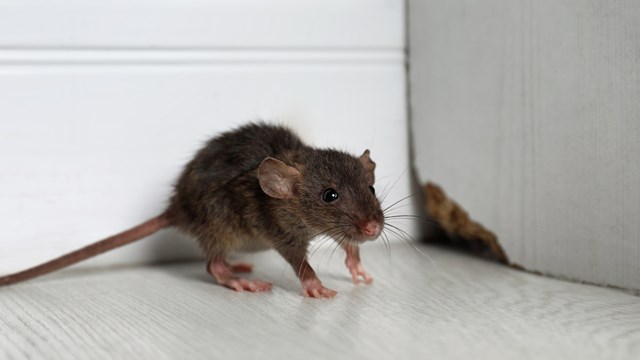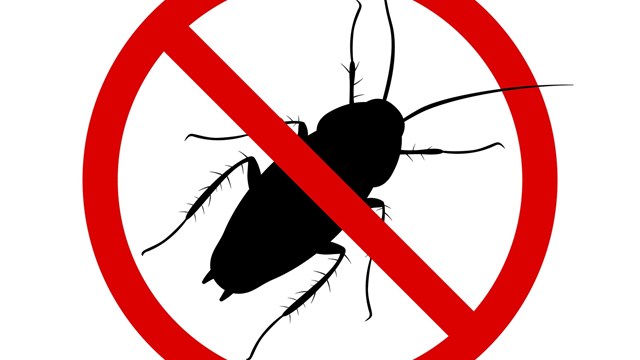For many, birds are a particularly contentious class of animal. Some people are extremely fond of them—admiring their colorful plumage, their melodic calls, or their enviable ability to soar effortlessly above whatever mess we have going on down here. For others, avians come with a whole host of nuisances—droppings, disease, damage—and perhaps thanks to Alfred Hitchcock’s “The Birds” or the Daphne du Maurier book by the same name, some people feel that birds have an undeniable ominousness about them. A group of crows is called a “murder,” after all.
Indeed, the horror in Hitchcock’s film is effective because it is actually loosely based on a true event that took place in the early 1960s, when a California town was inexplicably bombarded with dead and dying seabirds (decades later found to be the result of a shellfish toxin). And just recently, the Guardian reported on the nearby town of Sunnyvale that is currently experiencing a problematic influx of crows. The New York Times picked up the story in “A California City Is Overrun by Crows. Could a Laser Be the Answer?,” pointing to the coast-to-coast reality of feeling besieged by birds.
However one might feel about birds in general, anyone who lives in, owns, or manages a multifamily property must contend with their presence. Whether this takes the form of inviting them in with feeders and ponds or deterring them with spikes, netting, sonic emissions, or—yes—even lasers, co-ops, condos, and HOAs should have a plan for addressing problematic bird populations and dealing with their less-than-desirable contributions.
Birds of a Feather
Assured Environments, a pest control company that services multifamily properties in New York, New Jersey, and Connecticut, explains that there are particular nuances to bird control and mitigation that property owners and managers should be aware of. “Proper bird control requires scientific evidence for an effective plan, including a full evaluation of the property in addition to monitoring the situation after the plan is implemented to ensure good results,” says the company.
For the Northeast region they cover, especially in urban settings, Assured Environments confirms that the number-one Problem Bird is none other than the pigeon. Descended from carrier varieties that were used as messengers in ancient Egypt as early as 3000 B.C., today’s feral pigeons may have lost their homing abilities, but they have not lost their comfort with humans, and are now ubiquitous on any park bench in any city in the world.
Unfortunately, the camaraderie that has developed between pigeons and humans over the centuries has led to some pretty disgusting consequences, often left on parapets, gargoyles, terraces, awnings, and any other outdoor appurtenance of a building or community. According to Assured Environments, “‘City doves’ or ‘street pigeons’ may be the worst of the worst when it comes to New York and New Jersey bird pests. This is because of the colossal amount of excrement each bird produces annually—nearly two and a half pounds!”
As gross as that is, it has somehow not deterred city-dwellers who insist on feeding the local wildlife. If you live in or have visited New York City lately, you might be familiar with the Department of Health’s recent “Feed a Pigeon, Breed a Rat” public service campaign, meant to discourage people from tossing feed or seeds to their feathered friends, since doing so also encourages and sustains the rat population, which is already over-abundant and destructive. Rats have the reputation of being disease carriers—and they certainly can be—but according to Assured Environments, pigeons actually have the greater potential to carry and spread disease. That’s why having a plan to control them is essential for multifamily property owners and managers to protect the health and safety of their residents.
“Birds themselves are a vector for disease,” Assured Environments says. “Their feathers, droppings, and nests can all contain potentially dangerous pathogens. Salmonella, meningitis, tuberculosis, and encephalitis have all been found in pigeon excrement. Combine pigeon fleas, pigeon parasites, and diseased pigeon feces with an infestation, and you’ve got an extremely bad, possibly disastrous situation.” And it’s not just pigeons that have the potential for problems in multifamily communities. Other nuisance birds in this category that are prevalent in the Northeast include starlings, house sparrows, Canadian geese, and seagulls.
Cheep-Cheepskates
In addition to the health of humans and pets, property owners should also consider the risks that nuisance birds pose to their building’s or community’s financial health. “Safety, sanitation, and health hazards caused by bird droppings can pose serious liability risks, and if left untreated, can lead to accidents and lawsuits,” Assured Environments explains, suggesting that boards consider the costs of not addressing bird nuisances when evaluating proposals from pest management companies. Additionally, while birds themselves may be considered beautiful or at least interesting to look at, their feces, nests, and the debris they leave behind are not a good look for any building or community and can negatively affect property values. The ammonia and other caustic elements in accumulated bird droppings can also degrade certain building materials and cause further damage by clogging drain pipes, sewers, or external HVAC equipment.
For example, “Starling droppings can severely degrade a steel building’s components and cause substantial structural damage,” warns Assured Environments. “If a starling infestation is not removed in a timely manner, the corrosive droppings will not only dissolve building material but they will encourage fungal growth in the soil, leading to diseased grass, trees, and landscape plants.” This also leads to increased cleaning and maintenance costs, not to mention the costs to repair and replace corroded or otherwise damaged mechanisms and structures.
Flipping the Bird
Assured Environments says there are three main options for getting rid of unwanted birds from a multifamily community, or anywhere they might pose a problem: exclusion, perch removal, and behavioral adjustment.
Exclusion usually takes the form of netting, and is often recommended because it prevents birds from accessing potential roosting spaces in the first place. For a residential building or community, the upside is that this solution is relatively inexpensive, permanent, and humane—it doesn’t hurt the birds; it just makes the property less appealing as a nesting or roosting spot. But depending on how visible the netting is on the property, it might be an eyesore.
Perch removal products, including devices such as spikes, traps, or wires, prevent birds from landing on a building or other structural component. This might be a good solution for a limited area like a railing or an awning, but might not be practical in every nook and cranny of a building or property.
Behavioral adjustment approaches train birds not to land somewhere using deterrents like cutouts of fake predators (including owls or cats) and low-voltage electric shocks. While the idea of shocking birds may sound harsh, “Proper behavioral adjustment equipment won’t seriously hurt birds,” says Assured Environments, “but it will train them to avoid the area.” This method might not sit well with animal welfare advocates, but the low profile of the equipment makes it attractive for a community focused on design integrity or other aesthetic considerations.
Ca-CAW!
Regarding the aforementioned California crow conundrum, the Guardian mentions that the city of Auburn, New York, in the state’s Finger Lakes region, has experienced such an influx of crows in recent years that the birds “now outnumber human residents two to one.” This is another jurisdiction that has tried—unsuccessfully—to use lasers to abate its corvid population. Lasers have also failed in similar endeavors in Rochester, Minnesota, and Indianapolis, Indiana, where the crows simply moved from the inundated business district to another neighborhood where the lasers and recordings of bird warning calls that the city implemented were out of range.
Kevin J. McGowan, an ornithologist at the Cornell Lab of Ornithology in Ithaca, New York who has studied crows for more than 30 years, tells the New York Times that the lasers employed by these cities are meant to simulate the movement of other animals, which has the potential to scare the crows into roosting somewhere else. But, says McGowan, crows are not so easily moved from a place they’ve already congregated. He suggests a less subtle dispersal tactic, like aiming firecrackers and bottle rockets amid the interlopers. (Whether such noise and detritus would be less of a nuisance than the noise and detritus of the bird themselves is debatable.)
Looking at rising crow populations over the last few years in cities across the country, the New York Times article also cites Kaeli Swift, a postdoctoral researcher at the University of Washington who has studied crows. She says, “Roosts move around—we don’t exactly know why,” adding that roosts grow larger in the winter when crows migrate from Canada. Their increasing numbers in cities and suburban areas (rather than the rural environs they used to frequent) might have something to do with the steady supply of garbage left for them to descend upon.
A Bird in the Hand
As previously suggested, one man’s bird nuisance is another man’s bucolic pastime. Take this inquiry from one of our readers: “I have lived in my condo for more than a decade, and every winter, I (and a couple of other owners) have fed the birds with no problems. Watching the birds has been a comfort to me, especially these past two years with so many other activities limited due to the pandemic. However, last month some residents complained that the birdseed was causing an influx of mice. After the complaints, my condo board announced new rules that prohibit this activity.”
In response to whether the board had such authority, particularly without first consulting the owners, attorney Frank Lombardi of Lombardi Law Group in Lincoln, Rhode Island, says, “In most instances, [the] condominium association’s board has the exclusive authority to operate the common areas, including enacting rules which it reasonably believes will prevent damage to property. This includes what it perceives as a need to avoid the migration or infiltration of rodents.”
Lombardi goes on to say that there could be a provision in this particular condo’s governing docs limiting the board’s authority specific to bird feeding, but “what is in fact more likely is that a board’s power is limited by language requiring it to make reasoned and fair decisions while operating the common areas.” Whether their decision was a knee-jerk response to the complaint or a well reasoned decision after an investigation that proved the bird feeding was a nexus to the mouse infestation, it would be up to the reader and his or her cohort to suggest a solution that discouraged mice and other rodents, such as putting jalapeño pepper on the seed, or to “somehow prove that the birds are harmless and in fact contribute to the overall livability of the community.”
Even as I write this article, looking out the window of my 17th floor New York City apartment, I both marvel and shudder at the vast array of feathered wildlife just within my view. There are of course the ubiquitous flocks of pigeons that swoop en masse between pavement picnics and protruding parapets. Then there are the starlings, robins, jays, and other flitting fowl that mostly seem innocuous—until one poops on your head or nests in your gutter. The seagulls seem incongruous with the urban density—until I remember that I am, in fact, on an island. Perhaps most surprising is the family of red-tailed hawks that have made a home on the roof of the neighboring highrise, often showing off their impressive wingspan as well as their predatory nature when circling and diving in on an unsuspecting rodent. It really is a jungle out there.
Darcey Gerstein is Associate Editor and a Staff Writer for CooperatorNews.










Leave a Comment